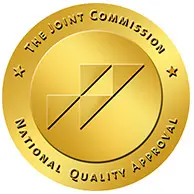OCD Treatment In
Orange
County
The Path To Sound Mind, Body and Soul
Orange County Premier Behavioral Health Services
Did you know that around 1.8% of the population were diagnosed with OCD within the past year? Despite having heard about OCD, many people are unaware of what it is or why some people have it and others do not.
Perhaps you have asked yourself these questions if you aren’t afflicted with OCD but know someone who does. Being familiar with OCD is important not just for understanding those who have it, but for understanding the condition itself. You can’t understand what someone suffering from this condition goes through without knowing the cause, the symptoms, and the treatment options.
What Is OCD?
The term ‘OCD’ is short for obsessive-compulsive disorder. With this name, the features of this mental illness — obsessions and compulsions — are defined perfectly.
Some people only suffer from mild OCD, which does not interfere with their day-to-day lives. On the other hand, in some cases, OCD can be so severe that a person cannot function normally in society.

The stress of living with OCD, along with fear, causes sufferers to have invasive thoughts or perform actions repeatedly. Despite sounding mild, these characteristics can negatively impact living a normal life.
Many OCD patients try to stop performing repetitive, useless actions to avoid anxiety, fear, and stress, but this often leads to even greater symptoms. In response to this rebound of stress and fear, they may act compulsively and obsessively because these actions may give a brief albeit fleeting sense of relief.
Due to this harmful cycle, OCD sufferers can find it hard to let go of their obsessions. Additionally, they may feel embarrassed about their condition. The embarrassment may prevent them from seeking professional treatment and may have a negative impact on how they live their lives.
Take our OCD Test to explore your symptoms and see if they align with those of an OCD diagnosis.
What Are the Causes of OCD?
Researchers have not yet found a definitive answer as to the cause of OCD. However, genetic factors may be involved.
Studies have shown that OCD is more common among those with close family members who also suffer from the condition. This suggests that certain people may be affected by one or more genes responsible for developing OCD.
To date, only the human serotonin transporter gene (hSERT) has been the only gene identified as potentially causing OCD when mutated. However, as with all ongoing research it is not yet certain if hSERT is the only true cause of OCD.
Besides genetic factors, there seems to be an environmental component to OCD development as well. For example, illnesses or stressful life events may contribute to the subsequent development of OCD. Children affected by Pediatric Autoimmune Neuropsychiatric Disorders Associated with Streptococcal Infections (PANDAS) may develop OCD in response to an infection.
Should you or someone you care about be grappling with OCD, we invite you to explore our dedicated page “What Causes OCD to Get Worse?” for insights into the variables that impact the disorder.
What Are the Signs and Symptoms of OCD?
Though sufferers of OCD usually exhibit both obsessive and compulsive behavior, some people only experience one or the other. Thus, OCD signs and symptoms are divided into obsessive and compulsive actions.
Obsessive Symptoms
- Obsessive signs and symptoms include:
- Fear of being contaminated
- Extreme stress that objects aren't symmetrical or in order
- Unwanted thoughts or images
- Thoughts of shouting inappropriately or acting out in public
Obsessive symptoms in OCD typically manifest as invasive thoughts that trigger significant stress, compelling patients to perform various compulsive actions to alleviate their distress. Often, individuals with OCD may not recognize that their thoughts are atypical or excessive, attributing them to personal quirks or intense caution. These pervasive negative thoughts can significantly disrupt daily activities, affecting performance at school, work, or during social engagements.
Among the spectrum of obsessive fears, concerns about germs and contamination are well-recognized, though it’s important to note that this has become somewhat of a stereotype of all individuals with OCD. Indeed, obsessions can span a wide range of fears, from the dread of being contaminated by germs to an aversion to human touch and general cleanliness concerns. However, the scope of obsessive thoughts extends beyond these, encompassing violent or disturbing content as well. For instance, individuals may experience a fear of harming themselves or others, a type of obsession known as suicidal OCD and suicidal thoughts, which involves intrusive thoughts about suicide without the actual desire to commit suicide. These thoughts are deeply distressing to those who experience them, emphasizing the complexity and severity of OCD. Additionally, there can be fears related to acting out inappropriately in public settings, further illustrating the broad and impactful nature of OCD on those it affects.
Compulsive Symptoms
- Compulsive signs and symptoms include:
- Excessive cleaning and hand washing
- Arranging things in a precise order
- Counting to a specific number
- Constantly checking things like making sure the dorr is locked or the stove is turned off
The compulsive symptoms of OCD are marked by repetitive actions driven by fear or intrusive thoughts, which serve as a temporary reprieve from the anxiety induced by obsessive symptoms. These actions, far from being pleasurable, are often distressing necessities for those with OCD, aimed at mitigating the overwhelming distress of their obsessions.
Individuals with OCD may devise specific plans or rituals in an attempt to control their intrusive thoughts, a behavior that can sometimes be linked to “moral OCD,” where the individual is excessively concerned with right and wrong, morality, and ethics. Despite their efforts, these rituals often prove ineffective, serving only to reinforce the obsessive-compulsive cycle inherent to the condition. The failure to adhere to these rituals, or the disruption of their environment, can lead to significant stress and anxiety, exacerbating their condition. This heightened state of distress can make it challenging for those with OCD to maintain close relationships, as the demands of their condition can strain interpersonal dynamics and lead to misunderstandings and conflicts. The complexity of compulsive symptoms, especially when intertwined with the intense moral scrutiny seen in moral OCD, underscores the profound impact OCD can have on an individual’s life and their interactions with others.
How Is OCD Diagnosed?
OCD seems to affect both men and women equally. As mentioned earlier, OCD symptoms can start at any age ranging from childhood to adulthood. Whenever symptoms first begin, they may be mild.
The severity of OCD may worsen over time, but some cases may worsen more than others. OCD can only be diagnosed by a trained psychiatric professional. It is also fairly common to see OCD diagnosed with other anxiety disorders, such as social anxiety, phobias, or panic disorder.
The psychiatric professional will look for the characteristic signs and symptoms of OCD. These are obsessions and compulsions that interfere with one’s daily actions and ability to live a normal life.
For those keen on diving deeper into the intricacies of OCD and its positioning within the broader realm of neurodiversity, our comprehensive guide, “Is OCD Considered Neurodivergent?“, offers valuable insights. This resource sheds light on the overlaps, nuances, and distinctions that exist.
Find Your OCD Treatment Center in Orange County
There is no cure for OCD, but there are OCD treatment centers and treatment options available. OCD treatment options include medication and therapy.
Medications include SSRIs (selective serotonin reuptake inhibitors) to regulate the brain’s serotonin. Antidepressants and anxiolytics may also be used.
Antidepressants are usually the first mode of action. Those with OCD may need to try different medications to find the one that works for them. OCD sufferers often find that their mental health conditions improve with the right medication, or they may choose to rely on more advanced treatments, such as transcranial magnetic stimulation (TMS).
Therapy often includes cognitive behavioral therapy. This involves changing the way one with OCD thinks. It also tackles the lessening of OCD fears such as dirt or germs.
Therapy requires effort but is often very effective. This is because one with OCD is able to recognize their obsessive and compulsive actions or fears. They are then able to recognize that these actions and fears are fruitless and can move past them.
Now that you know more about OCD treatment, causes, and signs, you can better understand OCD as a whole. If you or someone you know suffers from OCD, you can better determine when it’s time to get professional help.
How Acera Health Can Help
Acera Health is Orange County’s leading mental health treatment center. It is our mission to see individuals forge their own pathways through mental disorders and discover who they can really become. We provide everything from inpatient residential treatment to intensive outpatient treatment.
Our mental health professionals can help you or your loved ones learn to manage their intrusive thoughts and eventually overcome their OCD, along with any other severe mental health conditions. To learn more about our levels of care, contact us here.

Reach Out Today
To learn more about if Acera Health is right for you, and what to expect, contact us Today!
"*" indicates required fields
3100 Bristol St. Suite # 250 Costa Mesa, CA 92626
info@acerahealth.com
DHCS license number: MHBT220400
DHCS license expiration date: July 20, 2024
DSS license number: 306006131 & 306006072



